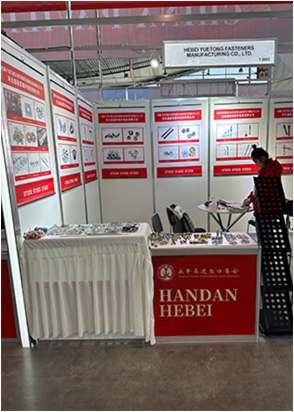Zář . 17, 2024 04:21 Back to list
High-Strength Threaded Rod Chemical Anchors | Reliable Fastening Solutions
Threaded Rod Chemical Anchor An Overview
In modern construction, securing various structures and installations is paramount for safety and durability. One of the critical components that have gained popularity in anchoring systems is the threaded rod chemical anchor. This type of anchor combines the strength of a threaded rod with the powerful bonding properties of chemical adhesives, making it an ideal solution for a wide range of applications.
A threaded rod chemical anchor consists of a long, thin rod made of high-strength steel, which is threaded along its entire length. This feature allows for easy adjustments and the ability to secure various fixtures or supports. The chemical adhesive, typically a two-component epoxy or polyester resin, is used to create a strong bond between the rod and the base material—usually concrete or masonry. This combination ensures that the anchor can withstand significant loads and resist environmental factors such as moisture and temperature fluctuations.
One of the primary advantages of using threaded rod chemical anchors is their versatility. They can be used in both vertical and horizontal installations, accommodating different project needs. Moreover, they are suitable for use in cracked and uncracked concrete, making them an excellent choice for diverse applications, such as securing structural beams, brackets, or even heavy machinery.
threaded rod chemical anchor

Installation of threaded rod chemical anchors is relatively straightforward, though it requires adherence to specific guidelines to ensure optimal performance. The process generally begins with drilling a hole into the base material to the required depth and diameter. The hole must then be thoroughly cleaned to remove any dust, debris, or moisture, which could weaken the bond. Next, the chemical adhesive is mixed and injected into the hole, followed by the insertion of the threaded rod. The adhesive cures over time, creating a robust connection that can support high loads.
Another significant benefit of threaded rod chemical anchors is their resistance to fatigue and static loads. Structures subjected to dynamic forces, such as seismic activity or wind, benefit from the exceptional holding power these anchors provide. They are also less susceptible to corrosion compared to traditional mechanical anchors, particularly when coated with protective finishes, ensuring longevity even in harsh environmental conditions.
However, it’s crucial to choose the right type of chemical anchor for specific applications. Factors such as the base material, load requirements, and environmental conditions should all be considered. Manufacturers often provide technical data sheets to help engineers and contractors determine the most suitable product for their projects.
In conclusion, threaded rod chemical anchors represent a robust and versatile solution for securing a variety of construction elements. Their combination of strength, ease of installation, and resistance to environmental factors make them an indispensable tool in the construction industry. As technologies continue to evolve, the application and effectiveness of these anchors are likely to enhance further, addressing the growing demands for safety and reliability in construction and engineering projects. Whether you're an engineer, architect, or contractor, understanding the benefits and applications of threaded rod chemical anchors can significantly contribute to the success of your constructions.


